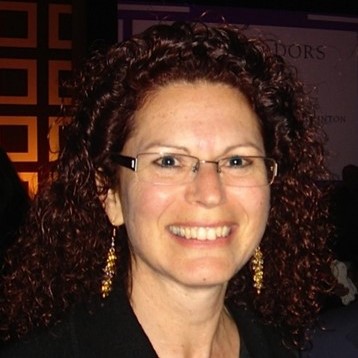
News

What Holocaust heroes can teach us now
JORDAN MOSHE
This was the empowering message conveyed by Holocaust educator Sue Hampel, the co-president of the Jewish Holocaust Centre in Melbourne last Wednesday. Hampel, a virtual guest of the Johannesburg Holocaust & Genocide Centre, spoke about building cohesion in challenging times and the lessons learnt from the Holocaust.
“Yom HaShoah was so different this year,” said Hampel. “I kept thinking about Holocaust survivors whose experiences have taught me so much about resilience, the human spirit, and the heights to which humanity can rise. Their stories are inspiring. We know tragedy can bring out the best and worst in people.”
Their stories and courage in the face of adversity serve to inspire us in our most challenging moments in the time of COVID-19. Though no situation can be compared to the Holocaust, there are many lessons we can learn from survivors to help us when times are tough.
To illustrate this, Hampel spoke of the bravery of medical professionals who tended to patients in the Warsaw Ghetto.
She conveyed how dire their reality was. “A third of Warsaw’s population lived inside 2.4% of the city’s space, so that’s roughly nine people per room. Hunger and disease were rampant, and if you tried to escape, you were shot on sight.”
In spite of the appalling conditions and risk to their own lives, doctors strove to save lives, using their professional status as healthcare workers to assist those most in need. They often faced terrible dilemmas.
“One would have been choosing between professional and personal commitments,” Hampel said. “Should they look after their patients under any circumstances, even at the risk of their own lives, or should they look out for themselves?”
Countless stories are told of medical staff smuggling people off train platforms moments before deportation, pretending that they needed medical care. Some doctors even broke the limbs of patients to prevent them from being deported, transferring them to the safety of the hospital.
Halina Rotstein, who practiced as a doctor in Warsaw, risked her life numerous times to save babies, smuggling them off the train platform after their parents had been deported. She also performed numerous surgeries in spite of the lack of resources, and tended to patients until the day she was deported to Treblinka.
“By all accounts, she was an amazing, selfless doctor,” said Hampel. “She was offered at least two opportunities to leave the ghetto. Her children had already been smuggled out, but she offered her Aryan papers to a nurse and stayed inside. She refused to abandon her patients.”
According to historical records, Rotstein remained committed until the end, accompanying 900 patients and 50 other hospital staff to Treblinka in September 1942.
A fellow doctor who survived recalled, “Halina went to the wagon voluntarily to be with those needing her help. This is how she understood her duty.”
A similar devotion was shown at the Czyste Hospital for infectious diseases, where staff continued to tend to those infected with typhus in spite of the risk of contracting it themselves. Up to 40% of physicians became infected with typhus and many perished, yet they remained loyal to their patients.
“The doctors and nurses constantly risked infection with serious diseases in their work,” said Hampel. “This is poignant when you think about what’s happening today, and the doctors who are committed to saving lives.”
Even medical education continued, with a secret school established in the ghetto to train students to assist the sick.
“The Germans allowed ghetto physicians to conduct a sanitary course to prevent infectious disease,” Hampel said. “The doctors transformed the course into a medical school with more than 400 students at different levels. They developed a fully-fledged programme for training future doctors in spite of very limited medical supplies.”
Though few doctors survived, those who did went on to practice medicine after the war.
Other examples of resilience under hardship included the cultural and spiritual resistance shown by communities. Many strove to keep a vibrant theatrical and literary life alive during the Holocaust, putting on performances to keep spirits up. This was well-illustrated by communities in Vilna and Theresienstadt.
“These communities were built in very challenging times,” said Hampel. “In a time of darkness, there was obviously the need for some normality. Cultural endeavours like operas, cabaret, and theatre were popular public activities, and a multifaceted range of programmes was established to counter Nazi efforts.
“Initially, these events were boycotted because people said you couldn’t make theatre in a graveyard,” she said. “But life was stronger than anything, and in the shadow of death, ghetto theatre flourished.” A vibrant puppet theatre, symphonic orchestra, even a musical school were just some of the projects sustained to maintain the sense of cultural defiance.
Many also strove to maintain spiritual life under the circumstances. The last Pesach seders were conducted in Warsaw in 1943, held against a background of machine-gun fire and burning buildings. The ghetto was liquidated shortly thereafter, after a failed uprising.
“They knew they were surrounded, but they decided it was still important to celebrate Passover,” reflected Hampel.
Hampel believes there are many universal lessons we can draw from these examples of heroism and determination, even under our present circumstances.
“We’ve learned to adapt culturally to a lot of new things,” she said. “It’s amazing the way that culture brings people together. Galleries and theatres may be closed, but entertainment continues online. We’ve found ways to maintain things in spite of our challenges.”




